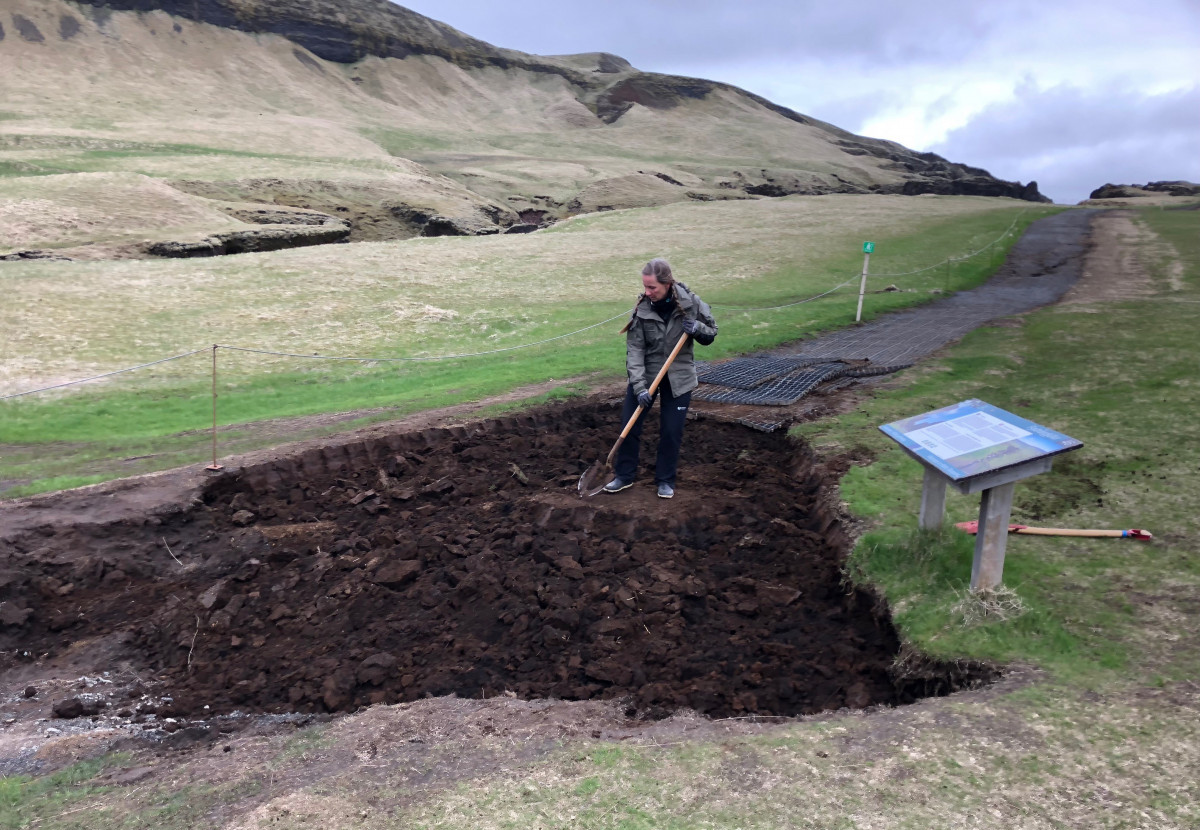In Iceland, a canyon’s closure provides calm after storm of unexpected fame
So many Justin Bieber fans beat a path to remote Fjaðrárgljúfur that Icelandic officials were forced to close the natural area.

Even if Fjaðrárgljúfur does not re-open as planned on June 1, there will still be plenty of places in Iceland to go to get a picture of yourself amid stunning natural surroundings. That, though, would do little to console fans of Justin Bieber, who have been barred from visiting the canyon, some 150 miles (250 kilometers) from Reykjavík, since February 27, when it was closed for the third time in less than two years.
Prior to 2015, Fjaðrárgljúfur was as unknown as is unpronounceable to outsiders. But after Bieber recorded part of the video to “I’ll Show You,” a song that has been streamed on YouTube 450 million times, an estimated million people have literally beaten a path to the canyon, doubling between 2016 and 2017, and then doubling again between 2017 and 2018.
The current closure was originally due to last just two weeks, but Umhverfisstofnun, the Icelandic environment agency, pushed back the re-opening indefinitely in order to allow paths to recover after a wet spring that had turned dirt paths into muddy tracks. Seeking to avoid the mud, visitors began walking on adjacent grass, in so doing turning even more of the sensitive vegetation into mud, according to Umhverfisstofnun.
Discussing the situation with CNN earlier this month, Inga Hlin Palsdottir, the head of Visit Iceland, the national tourism-promotion agency, explained that the sudden increase in the number of visitors had come as a surprise. And while work was being done to upgrade paths, it has been to keep pace with the growth.
“It’s just a natural wonder that wasn’t meant to be that popular,” Palsdottir said. “We need to build a better infrastructure there so we can invite people all year round. We need paths that can be discovered all year round. It’s not only because of nature; it’s a safety issue.”
[Tourism growth in some parts of the North is outpacing the global average]
Iceland currently receives about seven tourists per resident each year. This is well below other popular tourism destinations (Paris, for example, receives about 18 visitors per resident), but many of Iceland’s visitors are looking for the unspoiled natural experiences they see on people’s Instagram feeds and in promotional videos. There are still places where these experiences can be had, but guests typically wind up clustering at the most popular destinations.
Icelandic authorities have considered taking steps that would help address the situation, including admissions fees for the most popular sites, but, in connection with re-opening of Fjaðrárgljúfur and another natural area after one of the 2018 closures, Umhverfisstofnun suggested better guest behavior was a good first step.
“It has been difficult for our rangers to hold the areas closed and sadly many people ignore the closures. The areas are very damaged because of much traffic, too much pressure on nature and lack of infrastructure to protect the vegetation. Help us to protect the nature and follow the rules at the nature conservation areas.”
[Arctic tourism hotspots risk meltdown]
Criticizing guests, or the stars they follow around, is a delicate balance. At the same time as Iceland is trying to find the sweet spot between popular and overcrowded, it also markets itself as a filming location, offering tax breaks that have resulted in it being chosen as the filming site for major productions, including the “Secret Life of Walter Mitty” and multiple productions in the “James Bond”, “Star Wars”, and “Game of Thrones” franchises. These productions generate revenue, but they also inspire new waves of visitors to the locations where productions were filmed.
Officials, therefore, have been careful not to blame Bieber for filming in Fjaðrárgljúfur. Instead Guðmundur Ingi Guðbrandsson, the environment minister, urged all celebrities to consider the consequences of sudden popularity on remote locations.
“Rash behavior by one famous person can dramatically impact an entire area if the mass follows,” Guðbrandsson told the AP.